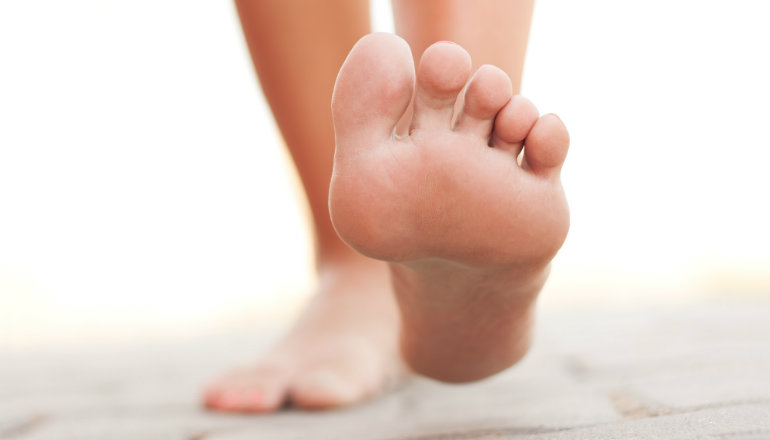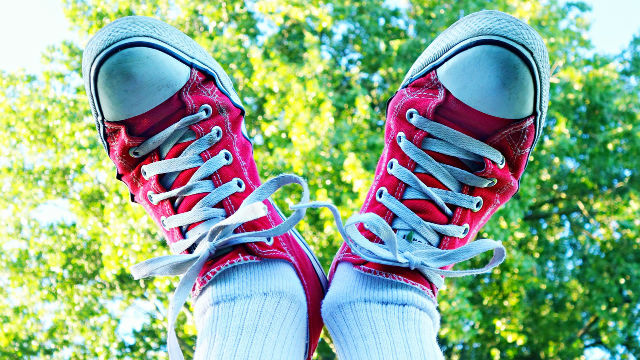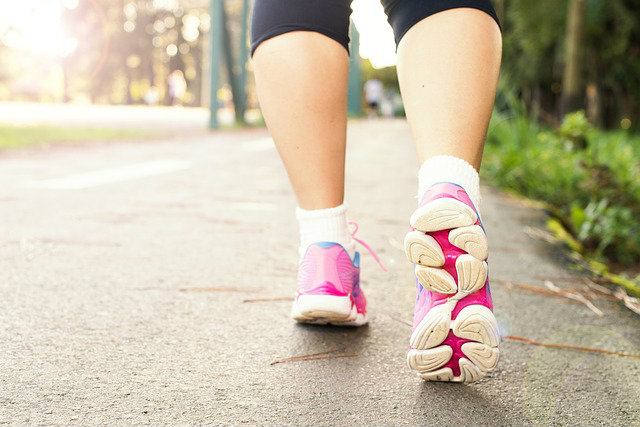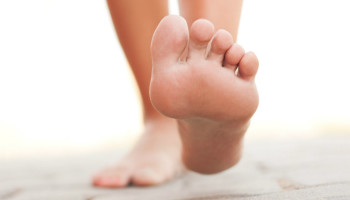 Reading Time: 6 minutes
Reading Time: 6 minutesIf you look at how most people around you move, you will notice many of them walk and stand with their feet turned outward. Sometimes it’s both feet or it can just be one (more often the right foot). This way of standing and walking is known as being “duck footed” or having “duck feet.”
Or maybe you have duck feet — have you checked?
Stand with your feet shoulder width apart and look down at your feet. If this is your natural resting position and one or both of your feet are turned outward, then you’re duck footed.
Having duck feet is something you can be born with, but most of us acquire this condition over time through poor positioning and bad movement habits. Some occupations are more prone to it. This includes jobs where you must be on your feet for long intervals and have to shift your weight back and forth to support yourself and to ease muscle tension.
Having duck feet certainly isn’t fatal, but it can lead to unnecessary wear and tear on the body as well as surgery in extreme cases. Today, I’m going to give you a few tips on how to correct this condition.

The Dysfunctional Mechanics of Duck Feet
The nature of standing and walking with your feet turned outward is highly inefficient. Think about how well your car would run if the tires were turned out at a forty-five-degree angle. You wouldn’t get far, and you’d wear out the steering and chassis in no time.
Our desired walking pattern is with our feet pointed forward. When we walk, we want the foot to contact the ground beginning with our heel, followed by the outside edge of our arch, and finally ending with the balls of the foot and the toes. This ensures the right muscles are firing when needed and our joints are moving as they were meant to.
If we walk with a duck foot position, then the pattern is different. The outside edge of the heel contacts the ground first, the foot rolls from the outside edge of the heel across the inside of the arch, and then finishes with the outer edge of the ball of the foot and big toe only.

When we move in a duck-footed position, muscles in our glutes and lower leg that should be helping us move more efficiently are shut off. Over time, these muscles can atrophy and become tight and immobile from disuse. The joints in our knees and ankles are then unsupported. And the connective tissue that holds them together receives increased weight and forces they aren’t designed to withstand. This can lead to a weakening in the body’s support structure and eventually knee surgery.
Those of us who train regularly are highly prone to this sort of injury due to the repetitive movement we put our body through. Do all that movement in a bad position and you speed up the rate at which your tissues breakdown.
The Origins of Duck Feet
Fortunately, it’s easy to diagnose if you’re one of many who have duck feet. And the condition is easily cured with time and consistency on your part.
Most of us are born with our feet turned inward or outward. Doctors refer to this as a “torsional deformity.” This is due to the position we’re in as we develop in the womb. The body often corrects itself as we get older. Within the first few years of our life, most of us are walking normally. But sometimes this issue doesn’t correct itself due to an individual’s habits, movement patterns, and/or injuries. This is where today’s mobility techniques come into play.
It should be noted that your duck-foot stance could be caused by a congenital defect (something you were born with). This is usually caused by a development in the bones of your pelvis that causes your feet to turn outward or inward. Keep in mind that this condition is exceedingly rare, and most cases of torsional deformities correct themselves.
If you’re concerned there’s more at work than just tight tissues, then you should be checked by a medical professional. In these rare cases, surgery may be the only option for correcting this stance. But, even if surgery is required, you can and should still work at keeping the affected muscles and connective tissue as mobile as possible.
How to Determine Where You Should Begin
So, if you did the check at the beginning of this article and discovered you are among the duck-footed population, let’s start addressing the issue. First, you need to determine what could be at the root of the situation:
- Lie down on your back.
- Let your legs relax and look at your knees.
- If your knees are turned outward along with your feet, then there is chronic tightness in your hips.
- If your knees are facing the ceiling but your feet are still turned outward, then the problem lies between your knees and your ankles.
To correct this issue, whether it originates in your hips or below the knees, you must begin with being aware of how you stand and how you walk. Every time you stop make sure your feet and knees are facing forward. When you walk make sure your feet track from the heel to the toe instead of from the outside of the heel to the inside of the foot. You can work at your mobility all day long, but if you’re not fixing the root of the problem you won’t make any progress.
When addressing the actual restriction in your tissues, there are a couple of mobility exercises you can apply to help ease the restriction and allow your feet to stand and move in an optimal pattern.
Daily stretching and mobility is an important part of health, fitness, and well-being. The Whole Life Challenge supports you in taking the daily steps needed to correct physical imbalances that result in issues like duck feet. Ten minutes a day is all you need to start noticing a significant improvement to how you feel (and look).
How to Work on Your Lower Legs
In this video, I give an example of calf mobility as it relates to duck feet and fixing tightness that stems from your lower legs. Most often tightness is rooted in the outside of the leg, but it’s best start by working the entire area to determine if there are other knots you need to be focusing on as well. Once that’s done, then you can focus on the outside of the leg and the restriction that keeps turning your feet out.
How to Work on Your Hips
This video details how you can use a lacrosse ball and a wall to work the piriformis muscle in your glutes and begin fixing tightness in your hips as it relates to duck feet. The piriformis allows our feet to rotate from left to right so it’s a key element to keep your feet and knees from habitually turning out.
Follow along with my videos and start adding these mobility exercises into your daily routine to help loosen your hips and legs, and begin rebuilding a strong frame for your body to move in a more effective and powerful pattern.






